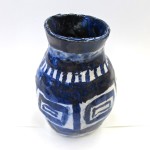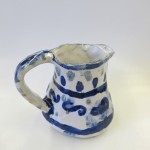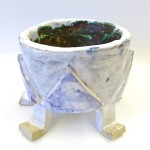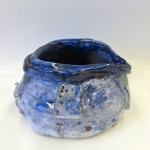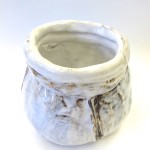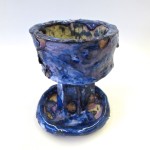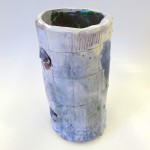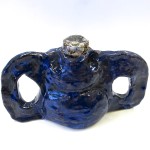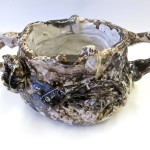Grade 7/8: Slab and Coil-built Pottery
The year before, I had this class work on slab-built lidded boxes, using underglazes and clear or white glazes. Though my repertoire of cone six glazes had not improved, I felt it was time to be a bit more ambitious with the forms.
I showed some photographic examples of pottery through the ages and different cultures. The range can be quite staggering, so I distilled the project from there. I made 4 large line-drawings of pottery with their characteristic details that they could choose from, or they could peruse the photographs to find another that appealed to them. It was important to this project that they make a pot that drew from historic forms.
We reviewed some of the mechanics of working with clay (not too much water!), and of building forms using slabs, pinch pots, and/or coils.
Now, I have to say I had great hopes for this project, especially as I drew out the examples. There can be such beauty in these old pots! Unfortunately, one of the forms I did not draw but was observed in the photographs – was the beer stein. In fact, many of the boys (at the same table) decided to do this, in the most static and simple way possible. Not the embellishments of some of the finer German ones, but easy, straight-sided mugs rendered as quickly as possible. Sigh. I tried, but they were not interested in going any further. So I just tried to make sure they constructed them well and finished them cleanly. (again, with mixed success)
Other students took the opportunity to try building more ambitious pots, using forms and methods fairly new to them. All throughout, I tried to get them to refer to the historic, both in form and in decorative detail.
Underglazes and then glaze, and I fired them at home in my kiln. Here’s a few of the results!
- Emily
- Aila
- Diego
- Marlow
- Beth
- Brayden
Spring 2014 /Parliament Oak School

